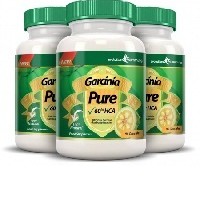Surprises on the Glycemic Index Chart
You really can't point a finger and guess which foods would be good or bad for your blood sugar. Some of the information you can get from the glycemic index chart is rather unpredictable. Since all foods are different, it is no real surprise that the differences in the GI can be vastly different from one another. It just so happens that the glycemic index chart has some pretty big surprises on it.
One of the largest surprises of the index is the GI score of watermelon. While most fruits are low or moderate on the chart, watermelon is a different story. Watermelon is a high GI food that can most definitely impact one's glucose levels in a major way. For this important reason, it is necessary for diabetics to be aware of a food like watermelon. Now this is not to indicate that watermelon is bad for you, as this is not the case. Watermelon has a variety of nutrients and is low in calories. Watermelon can make a fine alternative for dieters who are in need of a "sugar fix" and wish to avoid chemical and preservative laden junk food. However, diabetics and those looking to avoid high GI foods should probably look elsewhere when picking out fruits.
Another surprise on the glycemic index chart is that dates are very high on the list. In short, there is a reason that dates are so darn tasty! Simply put, dates can have a profound impact on one's blood sugar levels. So while tasty those looking to avoid foods high on the glycemic index chart, sadly dates are one to avoid.
As for a pleasant surprise, just by switching from sweet potatoes to yams one can move significantly lower on the glycemic index chart. Yams are packed with nutrition but also quite a bit lower on the GI than sweet potatoes, which are fairly high on the glycemic chart. Thus, just by switching from sweet potatoes to yams, it is possible to enjoy a very similar food with no real downside. This yam example helps underscore how the chart can be used as a very effective tool when planning meal choices. Most people enjoy a yam just as much as they enjoy a sweet potato. Therefore, making this switch should be easy.
The glycemic index chart is full of surprises. By carefully using this handy little list, it is possible for dieters, diabetics and those who wish to avoid the roller coaster ride of sugar's peaks and valleys can great improve their health. One of the most important benefits of using the index is that one will likely uncover a variety of misconceptions about where different foods stand on the index chart. The GI, in short, will help anyone that uses it make wiser food choices.
Related Articles
-
How Does The Fat Burning Furnace Diet Work-Fat Burning Furnace Review
Of all the weight loss program in the industry, why can Fat Burning F
-
Fat Burning Furnace System Truthful Reviews
The Fat Burning Furnace System is a diet and exercise program created
-
Fat Burning Furnace Before And After-Fat Burning Furnace Review
Rob Poulos, who has fought against his overweight since his childhood.
-
Are The Effects Of VASER Liposuction Ever Lasting?
VASER Lipo is successful in sculpting a proportionate figure. The effe
-
How To Discover Something to Motivate You to Exercise And Eat Right
Even though most people are aware of how significant exercise is to w
-
Simple Solutions to Losing The Baby Fat
You are thrilled and overjoyed to bring home your little bundle of
- DON'T MISS
- Tips for Eliminating Cellulite
- The Law of Weight Loss
- How To Lose Baby Weight
- Todays Diets - Whats Hot!
- Effective diet pill - Orlistat
- Top 5 Foods That Will Reduce Your Waistline
- Fat Burning Furnace - Short Burst 15 Minute Losing Weight Exercise!
- Is Your Weight Loss Blueprint Set In Stone?
- Cull Ups at Home During the advance actualization abreast to the Insanity
- Fat Burning Furnace Exercises Youtube




